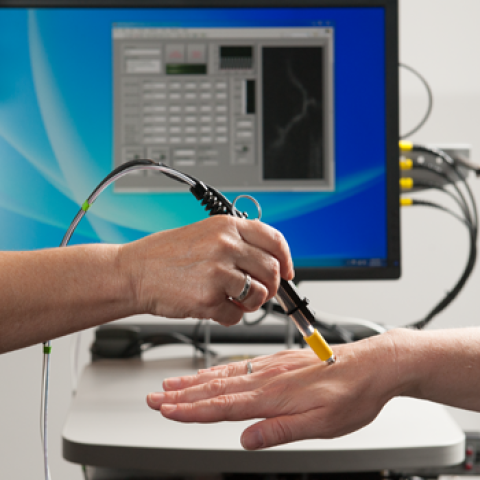Interdisciplinary Initiatives Program Round 6 - 2012
Christopher Contag, Pediatrics
Michael Clarke, Oncology
Olav Solgaard, Electrical Engineering
Circulating tumor cells (CTCs) are cancer cells that are shed into the bloodstream by solid tumor masses in a variety of organs. Their presence in the circulation has been associated with poor survival and is thought to represent an important step in the deadly process of metastasis to distant organs. Thus, the detection and measurement of these cells constitutes a unique opportunity to gauge a cancer patient’s status, including prognosis and response to therapy. However, the adult circulation harbors ~1.3 gallons of fluid containing trillions of normal blood cells, making CTC detection a “needle in a haystack” challenge. Current detection methods rely on analyzing CTCs enriched from a blood draw, which samples only ~0.1% of the entire circulation. This sampling limitation misses CTCs in up to half of all cancer patients, and diminishes our capacity to detect clinically relevant CTC subpopulations such as cancer stem cells (CSCs). In vivo approaches to enable sampling of the entire circulation will overcome these limitations. In this proposal we outline approaches to adapt our miniature fluorescence microscope for the noninvasive detection and quantification of CTCs flowing through superficial blood vessels. We propose preliminary experiments in a mouse model to generate proof of principle, and a pilot clinical trial to demonstrate the potential for clinical translation of this device to humans. The in vivo detection of rare circulating tumor cells, shed from primary and metastatic tumors, will enable clinical approaches for early cancer detection, prognostication, and predicting and monitoring response to therapy.



